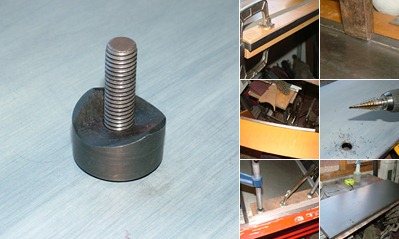Crazy days have ensued at the Scuderia Obsoleto. I’ve been snowed under and not just by the weather. That pesky day job has been getting in the way again. Work has been manic and I’ve been studying hard to update some of my IT certification. I still have some more to do.
I’ve been juggling home maintenance, helping out a few friends and watching my oldest nephew get institutionalised. He’s away on his honeymoon now, as it was the “institution” of marriage. So I’ve picked up some hammers and I’m getting back after it.
On the agenda while I’ve only been “bit & bobbing” was the front valance. This is mainly filler and patchwork plates, so my FSP wasn’t particularly accurate. I’ve not been taking it for gospel, instead using a more freehand approach to get one end looking right. Then I’ll make a better FSP from it to use for the other corner. They have to match each other, not the crap that I cut off. The section between the two corners should be a doddle by comparison. I’ll let you know how that works out for me ![]()




































